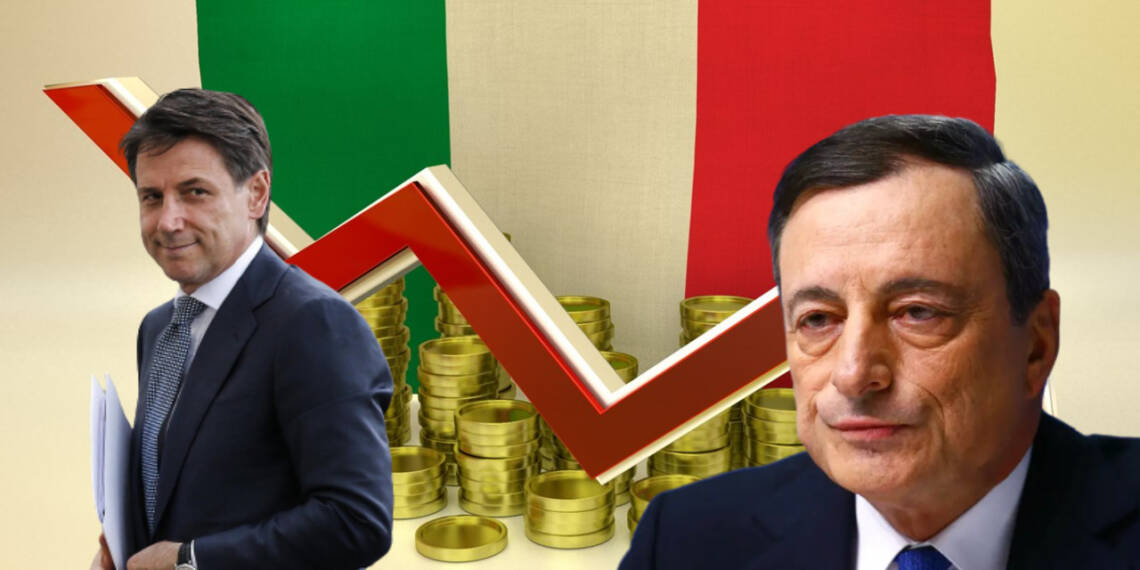This is a story of Italy’s decline. From being a prosperous nation to poor and ravished economy, everything has changed in Italy since the economic crisis of 2007-08.
And you’d be dumbfounded to know the staggering level of poverty in the nation today, if compared to the 2007 data. According to World Bank data, Italy’s GDP per capita has plummeted from $34,081 in 2007 to $31,511 in 2021. This is a huge 8.1% decline keeping the global growth in mind.

To put things in perspective, China’s GDP per capita grew from $4700 to around $12000 in the same period.
The quality of life is directly correlated with real GDP per capita; therefore, when growth is negative, the standard of living falls and individuals experience decline in living conditions.
The financial crisis of 2007–2008 led to a global financial crunch and shrinking of several economies at the same time. But while other economies have recovered after the crisis, the Italian economy has declined constantly.
Due to Italy’s GDP decline and the growing need for expenditure to support its economy, its debt to GDP ratio saw a huge increase.
Today, Italy is one of the most indebted nations in Europe; its public and private debt is greater than 330% of GDP. The government debt in Italy has increased from 106% of GDP in 2008 to over 150% now. Now, the point of focus is that, rather than curbing its debt problem, Italy has exacerbated it. Italy’s debt-to-GDP ratio has gone up by 41% in the last 14 years.

Most academic researches demonstrate that economic development begins to slowdown and the standard of living begins falling when total debt to GDP exceeds the level of 300%. Around 2010, Italy reached this point of excessive debt, and economic development promptly began to vanish. Since then, there has been no end to its debt misery.
Also Read: Italy’s next PM is going to be a nightmare for EU
Moreover, higher debt to GDP ratio has also led to greater tax hikes by government.
Amidst massive debt, Italy’s unemployment rate has also seen a huge growth from around 6% in 2008 to 8.1% in 2022. In the period between 2012-19, the unemployment rate was consistently above 10%.

Accompanied with unemployment, its inflation has soared from 4% in 2008 to 8% in 2022, which is a mind-boggling 200% increase.

The same period has also seen Italy’s purchasing power parity decrease.
When Italy’s GDP is adjusted with Purchasing Power Parity, it has seen a similar decline. From around $44,600 in 2008 to $41,900 in 2021, it has experienced a considerable decline.
That is a 6% decrease! And that means, Italy’s populace today can buy less stuff with the same amount of money than they could, in 2008.
Italy’s high level of debt, inflation, unemployment and political inefficiency are only the symptoms of the larger issue, but the elephant in the room is the shortage of human resources. People in age group of 15 to 64 are necessary for growth in an economy.

According to ISTAT‘s annual status of the country report released in June, the number of people in working age in Italy will decline by six million over the next 30 years.
Increased debt puts a weight around the neck of an economy. Youth find it more difficult to advance in their careers, purchase a home, and start a family as a result of the slower economic growth accompanied with high inflation. Therefore, there are fewer births, decreased fertility rates, delayed family formation and a baby bust as a result.
Future historians will likely view Italy as the perfect example of a country that managed to become an increasingly poor nation in just 14 years.
If you are an Italian, you might be contemplating that Covid might also be the reason for all this, but you are wrong. The downfall is a result of unchallenged economic desertification, complete demographic mis-management, plummeting cultural values, ubiquitous corruption, an inefficient bureaucracy and a complete politico-constitutional chaos.
However, it must be understood that if things continue in this direction, Italy will cease to exist as a modern industrial nation in less than a decade. It may take several decades to rebuild Italy, barring some sort of miracle. Right now, it appears to be a lost cause altogether.








